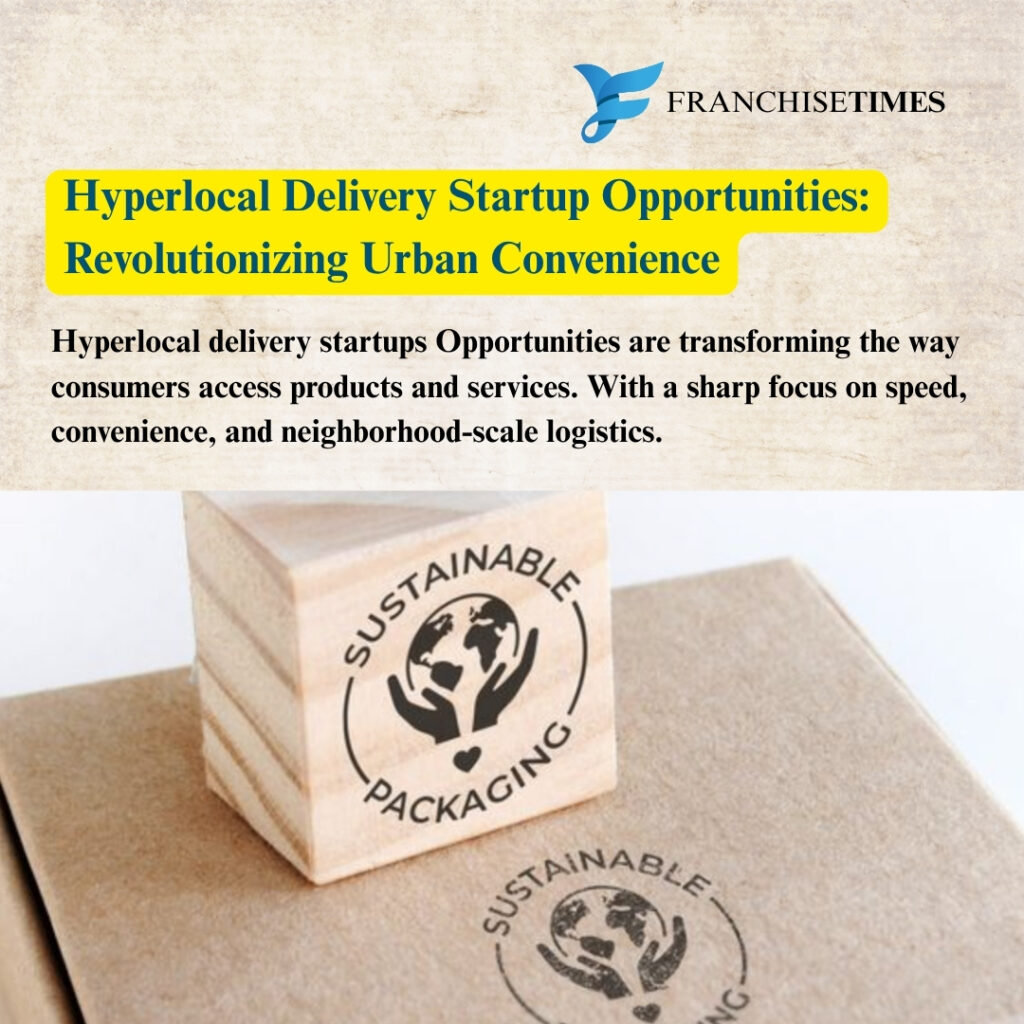Exploring Sustainable Packaging Startups Opportunities in 2025
The global emphasis on eco-conscious practices has paved the way for a booming sustainable packaging industry. As environmental concerns rise and consumers demand greener alternatives, a surge of innovation is reshaping how products are packaged and delivered. For entrepreneurs and investors alike, Sustainable Packaging Startup Opportunities are abundant and expanding across sectors.

1. Why Sustainable Packaging Startup Opportunities Is the Future
Traditional packaging has long relied on plastic and non-biodegradable materials, contributing heavily to pollution and landfill waste. According to a report by the Ellen MacArthur Foundation, over 300 million tons of plastic are produced globally every year, with half of it used for packaging. As environmental regulations tighten and public awareness grows, businesses are being pushed to adopt greener practices.
Here lies one of the biggest Sustainable Packaging Startup Opportunities. Eco-friendly alternatives like compostable mailers, edible packaging, plant-based plastics, and reusable containers are not just ethical—they are now essential for brand relevance. The shift toward sustainability is not a fleeting trend but a foundational shift in consumer behavior.
More importantly, government policies and incentives are supporting this transition. Countries like India, Germany, and Canada are setting ambitious targets to ban single-use plastics. This regulatory push opens doors for startups to innovate, scale, and thrive.
2. Emerging Business Models in Sustainable Packaging
One of the most exciting aspects of entering the sustainable packaging sector is the variety of viable business models. Entrepreneurs are no longer confined to just manufacturing; they can build successful startups around logistics, design, materials science, or even reuse platforms.
For instance, startups like Loop have popularized the concept of reusable containers for everyday products. Instead of single-use packaging, customers receive products in durable containers which are collected, cleaned, and reused. This closed-loop model dramatically reduces waste and encourages customer loyalty.
Meanwhile, materials innovation is another hotbed for startup growth. Startups focusing on biodegradable films, seaweed-based wrappers, or mushroom-derived packaging have attracted massive investor interest. The appeal? These materials offer similar performance to plastics but degrade naturally within weeks.
Furthermore, custom packaging design services that help brands transition to sustainable alternatives are also gaining traction. These companies consult on design, materials, and supply chains—turning sustainability into a selling point for their clients.
3. Technology: The Game-Changer in Eco Packaging
Technology plays a pivotal role in scaling sustainable packaging solutions. Startups leveraging AI, machine learning, and material sciences are achieving groundbreaking results. Whether it’s developing bio-based polymers or optimizing logistics to reduce emissions, tech is at the heart of the next wave of packaging innovation.
For example, smart packaging is gaining popularity in food and pharmaceutical sectors. These are packages embedded with sensors that track freshness, temperature, and even product authenticity. Combining sustainability with intelligence adds immense value and is ripe for startup disruption.
Another major advancement is 3D printing. This technology allows startups to produce lightweight, customized, and biodegradable packaging on demand. By reducing overproduction and storage needs, 3D printing supports both sustainability and efficiency.
Additionally, blockchain is being explored for supply chain transparency. Consumers and businesses increasingly want to know where their materials come from. Blockchain can verify the eco-certifications and traceability of sustainable packaging—making it another opportunity area for tech-savvy entrepreneurs.
Thus, technological innovation is not just a support system but a cornerstone of the Sustainable Packaging Startup Opportunities emerging today.
4. Market Gaps and Untapped Niches
Despite the buzz, the sustainable packaging market is still in its early stages—leaving plenty of untapped niches for startups to explore. One such gap lies in affordability. Many sustainable options are currently priced higher than traditional packaging, limiting adoption among small businesses. Startups that can reduce production costs or create affordable, scalable alternatives stand to gain significantly.
Another overlooked area is developing economies. While Europe and North America are leading the sustainability charge, markets in Southeast Asia, Africa, and Latin America are ripe for disruption. Entrepreneurs who can adapt eco-packaging solutions to local needs and economic realities will likely find eager markets and supportive communities.
Moreover, the B2B segment is less saturated than B2C. Large-scale manufacturers, logistics providers, and food chains are searching for scalable, compliant solutions. Creating enterprise-level packaging systems or SaaS tools for waste tracking and compliance reporting is another emerging frontier.
Lastly, the luxury and cosmetics sectors offer fertile ground. Premium brands are now under pressure to align their image with eco-values. Sustainable yet aesthetic packaging solutions—like glass alternatives, refillable containers, or compostable beauty kits—represent a high-margin niche.
Identifying these underserved areas is key to unlocking real value and long-term growth in this industry.
5. Steps to Launch a Sustainable Packaging Startup
Getting started in the sustainable packaging sector requires more than passion—it demands research, resources, and resilience. However, with the right approach, the journey can be both profitable and impactful.
Here are five essential steps to capitalize on Sustainable Packaging Startup Opportunities:
- Market Research – Identify your target audience, understand their packaging needs, and analyze the competition. Focus on a niche where you can differentiate.
- Choose the Right Material – From cornstarch plastics to bamboo fiber, selecting the correct material is crucial. It should align with performance, cost, and environmental impact.
- Build a Strong Supply Chain – Sustainability doesn’t end at materials. Partner with ethical suppliers, carbon-neutral shippers, and eco-certification agencies.
- Prototype and Test – Develop prototypes and run extensive testing for durability, compliance, and customer feedback.
- Seek Funding and Partnerships – Apply for green grants, pitch to impact investors, and collaborate with eco-conscious brands for faster market entry.
Furthermore, leverage storytelling in your branding. Consumers are more likely to support startups that are transparent about their mission, challenges, and impact.
By following these steps, new entrants can effectively navigate the green economy and secure a strong foothold in the sustainable packaging landscape.
Conclusion: A Green Goldmine of Innovation
The demand for sustainable packaging is no longer optional—it’s an urgent global necessity. With rising consumer awareness, stringent policies, and technological advancement, the stage is set for startups to redefine the future of packaging. Whether you’re a tech innovator, a material scientist, or a green entrepreneur, Sustainable Packaging Startup Opportunities are vast and varied.
As the world seeks cleaner, smarter, and more ethical ways to package goods, those who act now can build not just successful businesses, but a better planet. So, if you’re looking to start something meaningful in 2025, sustainable packaging might just be the opportunity you’ve been waiting for.
